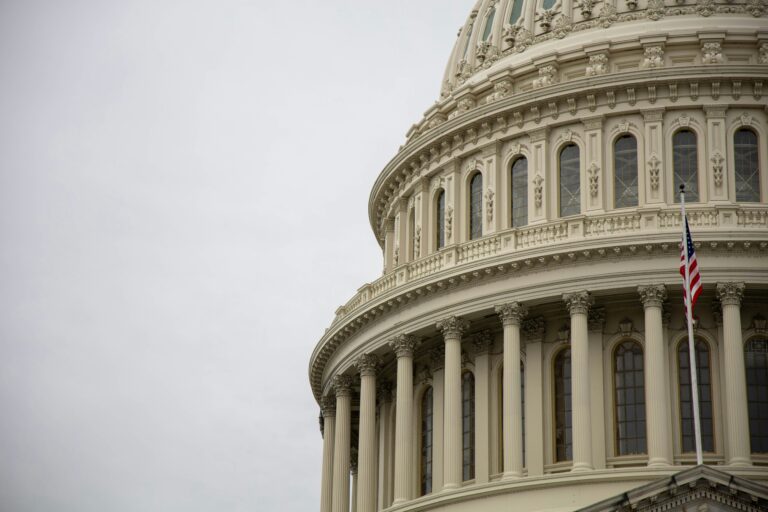
The holiday season brings a spirit of generosity, with people and organizations alike making charitable contributions to support those in need. But beyond the immediate impact of providing food, shelter, and resources, charitable giving also plays a significant role in shaping public policy. From advocating for change to addressing gaps in government services, charitable organizations influence policies that can have lasting effects on society.
As we enter the season of giving, it’s worth exploring how charitable acts intersect with politics and policy. This article delves into the role of charitable organizations in shaping public policy, the ways in which they influence government decisions, and why giving during the holiday season is not only a gesture of goodwill but also a powerful tool for social and political change.
1. The Role of Charitable Organizations in Addressing Social Needs
Filling the Gaps in Government Services
Charitable organizations often step in where government programs fall short. From homelessness and food insecurity to healthcare and education, nonprofits and charities provide essential services that aren’t always sufficiently covered by public funding. In many cases, they become a lifeline for vulnerable communities.
Examples of Charitable Impact:
- Food Banks: Food insecurity affects millions of people, and food banks play a crucial role in providing meals. Through their work, food banks not only address an immediate need but also highlight the systemic issues that contribute to hunger, such as poverty and economic inequality.
- Healthcare Charities: Organizations like Doctors Without Borders and local health clinics provide free or affordable medical care to underserved populations, underscoring the need for accessible healthcare and encouraging policymakers to address gaps in public health infrastructure.
Policy Implications:
By stepping in to provide services, charitable organizations bring attention to areas in need of reform. Their presence highlights the limitations of current policies and pushes lawmakers to consider ways to make these essential services more accessible through public funding or regulatory changes.
2. Charitable Advocacy: Using Influence to Shape Policy
Advocating for Policy Change
Many charitable organizations engage in advocacy, using their influence to push for policies that address the root causes of the issues they encounter. From environmental protection to criminal justice reform, charitable organizations often advocate for systemic change that extends beyond immediate aid.
Examples of Charitable Advocacy:
- Environmental Organizations: Groups like the Sierra Club and Greenpeace work to protect natural resources, advocating for policies to combat climate change, reduce pollution, and protect wildlife. Their efforts influence regulations, such as emissions standards, and promote sustainable practices.
- Social Justice Organizations: Charities like the NAACP and the ACLU work toward policy changes that address racial and social inequalities. By supporting criminal justice reform, voting rights, and equal opportunity legislation, they help shape policies that foster a more just and equitable society.
Policy Implications:
When charities advocate for change, they bring public attention to critical issues, mobilize communities, and encourage policymakers to address underlying societal problems. Charitable advocacy serves as a bridge between community needs and legislative action, helping to create policies that reflect the values of equity and fairness.
3. Public-Private Partnerships: Collaboration for Greater Impact
Strengthening Public Policy Through Partnerships
Charitable organizations often collaborate with government agencies, forming public-private partnerships to expand their impact. These partnerships allow for resource sharing, improved efficiency, and a greater reach in addressing issues like disaster relief, housing, and healthcare. When governments and charities work together, they create comprehensive solutions that benefit communities on a larger scale.
Examples of Public-Private Partnerships:
- Disaster Relief Efforts: Organizations like the American Red Cross often partner with FEMA and local governments to coordinate disaster relief. These partnerships ensure that communities receive immediate assistance during crises while creating long-term recovery plans.
- Affordable Housing Initiatives: Nonprofits like Habitat for Humanity work with federal and state housing agencies to provide affordable housing for low-income families. These partnerships help fill the housing gap by combining private funding with public policy support.
Policy Implications:
Public-private partnerships demonstrate the effectiveness of collaborative efforts in addressing social issues. By showing what’s possible when resources are pooled, these partnerships can influence public policy by promoting similar collaborative models in other areas, such as healthcare, education, and infrastructure.
4. Tax Incentives for Charitable Giving: Encouraging a Culture of Generosity
The Role of Tax Policy in Supporting Charities
Tax policies, particularly deductions for charitable donations, play a significant role in encouraging giving. By offering tax benefits to donors, the government incentivizes individuals and businesses to contribute to charitable organizations. These tax policies create a culture of giving, especially during the holiday season when people are more inclined to make charitable donations.
Examples of Tax Incentives:
- Charitable Contribution Deduction: In the U.S., individuals can deduct donations to qualifying nonprofits from their taxable income, making giving financially attractive for taxpayers.
- Corporate Tax Benefits: Businesses that donate to charities can also benefit from tax deductions. These incentives encourage companies to support causes they believe in, creating a ripple effect of generosity.
Policy Implications:
Tax incentives for charitable donations help sustain nonprofit organizations, enabling them to continue their work and expand their reach. Policymakers often debate the structure of these incentives, as changes to tax policy can significantly impact the financial stability of charities, particularly small and local organizations.
5. The Political Power of Philanthropy: Large-Scale Giving and Policy Influence
Philanthropy and Political Advocacy
Large philanthropic organizations, like the Gates Foundation or Open Society Foundations, wield significant influence in public policy. These organizations have the resources to fund research, launch initiatives, and support advocacy efforts that drive policy changes in areas such as education, healthcare, and social justice.
Examples of Philanthropic Influence:
- Education Reform: The Gates Foundation has invested heavily in K-12 and higher education, funding initiatives aimed at improving educational outcomes and promoting policy changes that support innovation and accessibility in schools.
- Healthcare Initiatives: Philanthropic organizations like the Robert Wood Johnson Foundation focus on public health initiatives, funding research and advocacy efforts that influence health policy, improve healthcare access, and address issues like health equity and substance abuse.
Policy Implications:
Large-scale philanthropic giving often draws attention to issues that might otherwise lack visibility, influencing policy agendas and encouraging government investment in areas like education reform, healthcare, and economic development. However, it also raises questions about the role of wealth in shaping public policy, as philanthropic power can sometimes sway policy priorities toward the interests of wealthy donors.
6. The Importance of Giving During the Holiday Season
Seasonal Giving and Its Impact on Public Awareness
The holiday season brings increased charitable giving as people and organizations seek to give back. This influx of donations enables charities to expand their reach, support more people, and address urgent needs. Holiday giving also raises public awareness about important social issues, prompting discussions on poverty, homelessness, and healthcare that influence public opinion and, ultimately, policy.
Examples of Holiday Giving Campaigns:
- Toys for Tots: Each holiday season, the Marine Toys for Tots Foundation collects and distributes toys to children in need. This campaign not only spreads joy but also brings attention to childhood poverty, inspiring people to support policies that help low-income families.
- Food Bank Drives: Local food banks often hold holiday drives to provide meals for families facing food insecurity. These drives highlight the ongoing problem of hunger, pushing communities and policymakers to consider long-term solutions.
Policy Implications:
Holiday giving campaigns can influence public policy by increasing awareness of social issues and motivating citizens to support legislative efforts that address them. Seasonal generosity fosters a sense of collective responsibility, reminding people of the importance of supporting vulnerable populations year-round.
7. Charitable Giving as a Pathway to Civic Engagement
Building a Culture of Involvement
Charitable giving encourages citizens to think beyond themselves, fostering a sense of responsibility toward their communities. Many people become involved in social issues through charitable donations, which can lead to further civic engagement, such as volunteering, advocating, or participating in public demonstrations.
Examples of Charitable Giving Inspiring Civic Engagement:
- Environmental Causes: Donating to environmental organizations can inspire people to engage in sustainability efforts, advocate for conservation policies, or participate in local clean-up initiatives.
- Social Justice Movements: Giving to social justice charities often motivates individuals to become involved in movements advocating for equal rights, pushing for reforms in areas like criminal justice, voting rights, and education.
Policy Implications:
Charitable giving serves as an entry point for greater civic involvement, encouraging citizens to engage more actively in public life. By supporting charitable causes, individuals begin to participate in the democratic process, advocating for policies that reflect their values and contribute to meaningful change.
Conclusion: The Political Significance of Giving
Charitable giving is more than just a generous act; it’s a powerful tool for influencing public policy and shaping the direction of society. Charities and philanthropic organizations fill critical gaps in services, advocate for change, and partner with governments to expand their reach. During the holiday season, giving becomes a reminder of our collective responsibility to support one another and work toward a more equitable society.
As we enter this season of generosity, let’s remember that each donation, whether large or small, contributes to a larger movement for positive change. By supporting charitable organizations, we play a role in shaping public policy, addressing societal challenges, and creating a future that reflects the values of compassion, fairness, and justice. In this way, the politics of giving becomes a reflection of our commitment to building a society where everyone has the opportunity to thrive.



